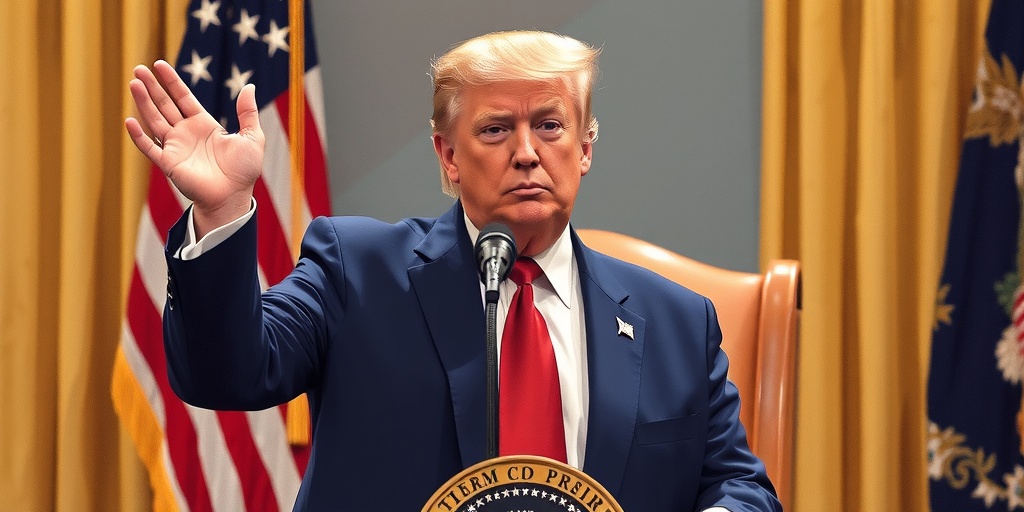Now Reading: Education Department to Lay Off Up to 50% of Staff
-
01
Education Department to Lay Off Up to 50% of Staff
Education Department to Lay Off Up to 50% of Staff

Title: Potential Staffing Cuts at the Education Department Signal Major Changes Ahead
In an alarming development for education policy in the United States, officials within the Trump administration are reportedly preparing to lay off nearly half of the staff at the Department of Education. This dramatic move, which could be announced as soon as Tuesday, risks dismantling the agency responsible for a variety of critical functions, including managing federal student loans, monitoring student achievement, and enforcing civil rights laws in schools.
With approximately 4,200 employees, the Education Department already has the smallest workforce among the 15 cabinet-level executive departments. The proposed staffing cuts could drastically affect its operations and signal a larger agenda by President Trump to fundamentally restructure, if not dismantle, the agency altogether. While Trump has expressed a desire to eliminate the Department of Education, such an action would require congressional approval, which adds another layer of complexity to the situation.
The rumors surrounding potential layoffs intensified following an internal email sent to department employees at around 2 p.m. This email announced that the agency’s offices in the Washington area would be closed on Wednesday and would reopen on Thursday. Although the email did not specify a reason for the temporary closure, it mirrored previous notifications from the administration regarding office closures prior to significant staffing reductions at other agencies, including the U.S. Agency for International Development and the Consumer Financial Protection Bureau.
Critics have cautioned that these cuts could lead to significant repercussions for the education sector as a whole. The Department of Education plays a vital role in funding and regulating educational programs, particularly for low-income and disadvantaged students. The proposed layoffs could undermine essential services that ensure equitable access to education across the country.
Adding to the administration’s existing strategy in education, President Trump has sought to empower state and local school districts to take greater control over educational oversight. This approach aligns closely with the growing parents’ rights movement—an initiative that gained traction amid the controversies surrounding school closures and various limitations during the COVID-19 pandemic.
The parents’ rights movement has focused on opposing progressive educational policies, particularly those concerning issues related to the L.G.B.T.Q. community and discussions of race. Activists within this movement argue that certain curricular priorities dilute parental rights and values, leading to increased calls for more locally controlled educational environments.
In a recent interview with Fox News, Education Secretary Linda McMahon suggested that President Trump plans to sign an executive order aimed at dismantling the Department of Education, although she did not disclose specific details on when that might occur. An executive order to eliminate the department would challenge the legislative authority of Congress, which legally established the agency. Such a move would require Congressional consent, making it uncertain whether the administration could muster sufficient bipartisan support, particularly given that recent public opinion polls show roughly two-thirds of Americans oppose the closure of the Education Department.
As discussions about potential layoffs and the fate of the Education Department unfold, many stakeholders—including educators, students, and parents—are watching closely. The potential reduction of personnel and services could exacerbate existing inequities within the educational system, making it more difficult for marginalized communities to access the resources and support they need.
This impending upheaval within the Department of Education serves as a focal point for broader national debates regarding educational governance, ideological boundaries in school curricula, and the role of federal oversight in local education matters. As these discussions progress, the future of the department hangs in a precarious balance, leaving many to wonder how these changes will ultimately impact the landscape of American education.
In summary, the potential layoffs at the Department of Education could signify a significant shift in the U.S. education system, emphasizing state control and potentially limiting federal oversight. The intersection of policy, public opinion, and political maneuvering will play a crucial role in determining the department’s future and its ability to serve the nation’s diverse student population.
Stay Informed With the Latest & Most Important News
Previous Post
Next Post
-
 01New technology breakthrough has everyone talking right now
01New technology breakthrough has everyone talking right now -
 02Unbelievable life hack everyone needs to try today
02Unbelievable life hack everyone needs to try today -
 03Fascinating discovery found buried deep beneath the ocean
03Fascinating discovery found buried deep beneath the ocean -
 04Man invents genius device that solves everyday problems
04Man invents genius device that solves everyday problems -
 05Shocking discovery that changes what we know forever
05Shocking discovery that changes what we know forever -
 06Internet goes wild over celebrity’s unexpected fashion choice
06Internet goes wild over celebrity’s unexpected fashion choice -
 07Rare animal sighting stuns scientists and wildlife lovers
07Rare animal sighting stuns scientists and wildlife lovers




















